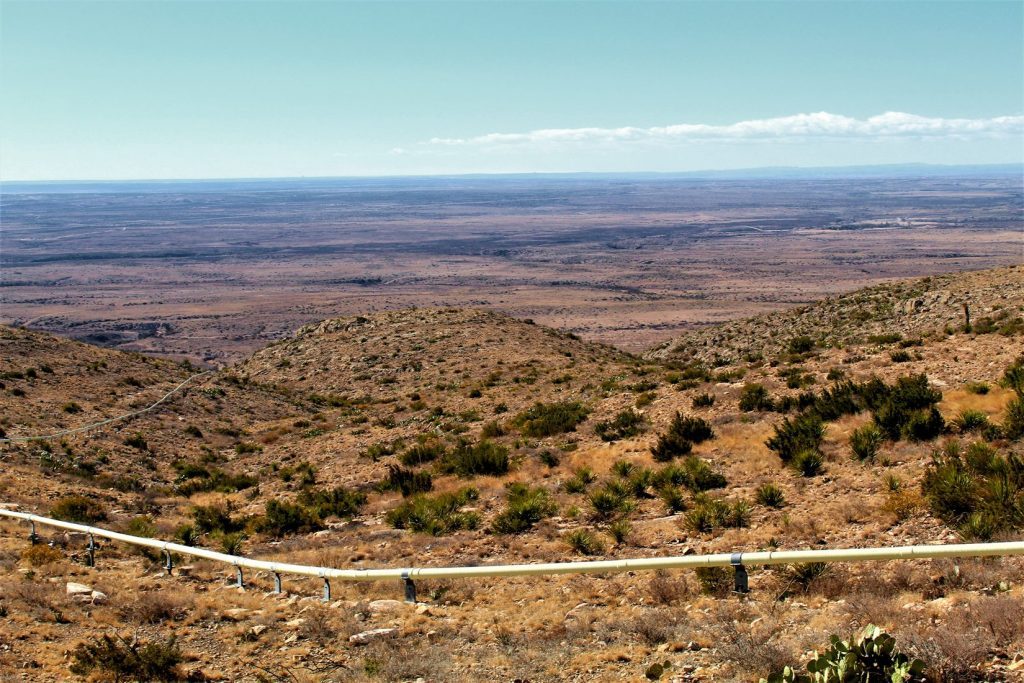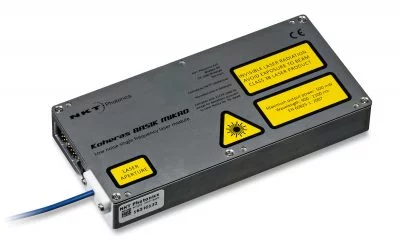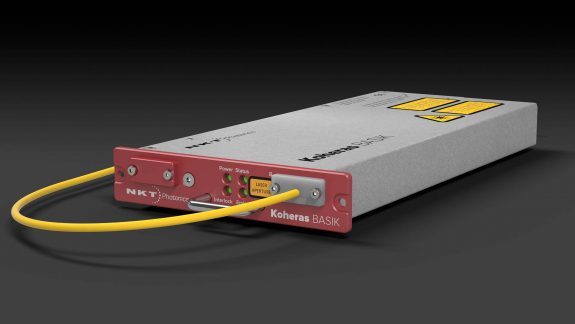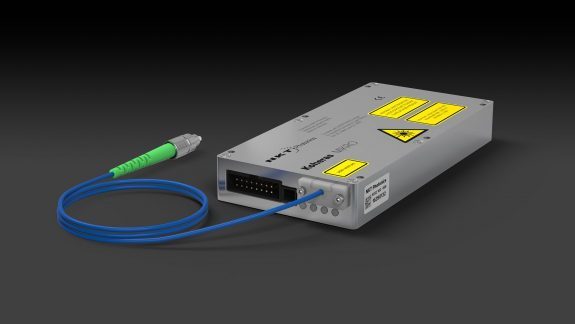Install and forget!
If you deliver Distributed Acoustic Sensing (DAS) systems for pipeline monitoring, perimeter security, or border control (to name a few), then it is likely that your systems will be installed in harsh environments in remote places.
Wouldn’t it be nice if you could install the system and forget all about it? With our robust and reliable Koheras fiber lasers, you can.
Designed for real-life
We understand that the laser is a key component in your interrogator. It dictates the sensitivity, range, reliability, and failure rate.
Our Koheras lasers are designed for real life. We have combined the all-fiber distributed feedback design with field-proven components from the telecom industry to give you a robust, reliable, maintenance-free, and service-free laser. They’re as low-maintenance as a cactus!
When we say reliable, we mean a typical lifetime of more than 10 years and a return rate of less than 1%.
Over the last 20 years, our customers have deployed more than 15,000 Koheras lasers in the harshest environments. We have lasers on oil rigs, submarines, wind turbines, and even in space.
You do not have to worry about laser supply. We can deliver all the lasers you need when you need them. Every year, our customers deploy more than a thousand Koheras lasers across the planet.

Long-range and high accuracy
To obtain long measurement ranges, our customers typically look for lasers with a long coherence length and low noise to get a high dynamic range. With a Koheras laser, it is possible to obtain measurement ranges of up to 100 km which makes it easier for you to handle your system and lets you save money on equipment.
Ultra-low phase noise (or frequency noise) is a key laser parameter for the sensitivity and accuracy of the sensing system. The high sensitivity of the Koheras laser ensures an excellent detection of acoustic signals.
Due to their intrinsic low-noise design, you get sub-picometer stability and mode-hop-free performance. Do you want to mount them upside-down? No problem. The all-fiber design keeps the laser stable. Install them in the desert? No problem. Temperature changes do not affect stability. Take them for a ride? No problem. Vibration and noise do not distort the signals.
Pick the right laser
Most of our customers pick the MIKRO E15 for their DAS interrogator. Its narrow linewidth, long coherence length, and ultra-low phase noise make it ideal for applications such as DAS, vibrometry, wind LIDAR, Photon Doppler Velocimetry, and inertial sensing.
The BASIK X15 has ultra-low phase noise and is a popular choice in applications such as down-the-well sensing, oil exploration, naval acoustic sensing, and subsea cable monitoring.

If you need a flexible system with more wavelengths, our Koheras lasers are a bit like Lego (although less colorful). You can combine lasers to get the system that best suits you. Use the Koheras ACOUSTIK rack integration to combine up to 16 Koheras BASIK fiber lasers and two matching BOOSTIK line card amplifiers. The ACOUSTIK provides power and control to all modules and you can add and change channels as needed.
References
Here are some publications where others describe their work within DAS, using our Koheras lasers.
- Integrated sensing and communication in an optical fibre by Haijun He, Lin Jiang, Yan Pan, Anlin Yi, Xihua Zou, Wei Pan, Alan E. Willner, Xinyu Fan, Zuyuan He & Lianshan Yan, published in Light: Science & Applications, vol. 12, article 25, 2023.
- Indoor optical fiber eavesdropping approach and its avoidance by Haiqing Hao, Zhongwang Pang, Guan Wang, Bo Wang published in Optics Express, Vol. 30, issue 20, 2022.
- Non-Invasive Acoustic Monitoring of Gas Turbine Units by Fiber Optic Sensors by Konstantin V. Stepanov, Andrey A. Zhirnov, Stanislav G. Sazonkin, Alexey B. Pnev, Alexander N. Bobrov, and Dmitriy A. Yagodnikov, published in Sensors, 2022.
- Demodulation Scheme with Low Harmonic Distortion for PMDI-TDM Based Fiber-Optic Sensor Array by Jianxiang Zhang, Kun Cheng, Wenzhu Huang, Wentao Zhang, Fang Li published at the 27th International Conference on Optical Fiber Sensors, Technical Digest Series, Optica Publishing Group, 2022.
- The sparsity of the response of a quasi-distributed fiber optic sensing system allows ‘overclocking’ its interrogation by Nadav Arbel, MayaYanko, Avishay Eyal, published in Optical Fiber Technology, Volume 61, January 2021, 102373, 2021.
- Time-expanded phase-sensitive optical time-domain reflectometry by Miguel Soriano-Amat, Hugo F. Martins, Vicente Durán, Luis Costa, Sonia Martin-Lopez, Miguel Gonzalez-Herraez, María R. Fernández-Ruiz published in Light: Science & Applications, 2021.
- On the phase fading effect in the dual-pulse heterodyne demodulated distributed acoustic sensing system by Xiangge He, Xiaohu Xu, Min Zhang, Shangran Xie, Fie Liu, Lijuan Gu, published in Optics Express, Vol. 28, No. 22, 26 October 2020, Optics Express 33433, 2020.
- Performance Improvement of Dual-Pulse Heterodyne Distributed Acoustic Sensor for Sound Detection by Xiangge He, Min Zhang, Lijuan Gu, Shangran Xie, Fei Liu, Hailong Lu, published at Sensors (Basel). 2020 Feb; 20(4): 999. 2020.
- Combined frequency and phase domain time-gated reflectometry based on a fiber with reflection points for absolute measurements by V.A. Yatseeva, A.M. Zotovb, O.V. Butova, published in Physics, 2020.
- Cost-effective solution for phase-OTDR distributed acoustic/vibration sensing by V. V. Spirin, C. A. López-Mercado, J. Jason, J. L. Bueno-Escobedo, P. Mégret, M. Wuilpart, D. A. Korobko, I. O. Zolotovskii, S. G. Sokolovskii, A. A. Fotiadi, published in SPIE LASE proceedings 10903, 2019.
And don’t miss the short article on how thousands of our low-noise Koheras lasers keep a large-scale data network secure, with SFO Technologies.
Features
Low phase-noise, long coherence length
Accurate pinpointing of intrusion
Industrial reliability
Designed for OEM-integration
Maintenance-free 24/7 operation
Don’t know what DAS is?
Distributed Acoustic Sensing is a sensing system based on light. The system consists of an interrogator and some optical fibers. The optical fibers replace traditional discrete sensors and let you measure sound along with its entire length.
The interrogator has a laser inside which sends light pulses into the optical fibers. Most of the light travels forward but some of it is reflected back to the interrogator.
Sound and movements from the environment affect the light. The interrogator analyses the reflected light to figure out what is going on and if it should send an alert. The ultra-precise detection reveals the exact position of the incident, eliminates uncertainties, and saves time.




